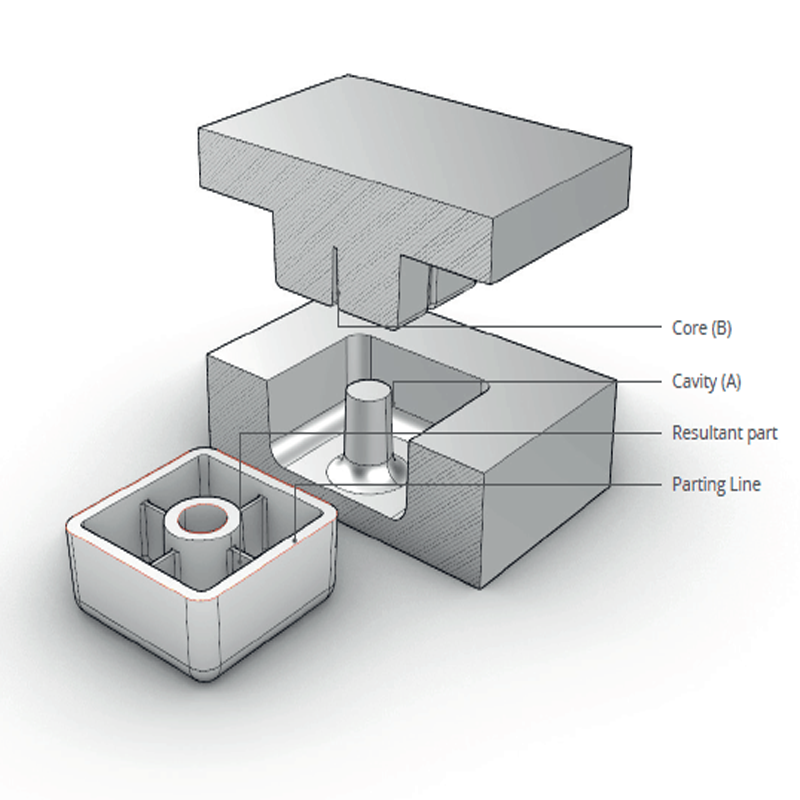At LSRmold, we understand that the injection molding process is pivotal in the production of high-quality, precision-engineered parts. Two key components in this process, the cavity and core, play essential roles in shaping the final product. Knowing how these components function together is critical for optimizing the molding process and ensuring consistent, reliable results. In this blog, we’ll explore the differences between the cavity and core, discuss their individual contributions to molding, and highlight best practices for designing these components to ensure flawless manufacturing. Whether you’re an experienced engineer or new to injection molding, gaining insight into these essential elements will help you make informed decisions that enhance your product’s quality and manufacturing efficiency.
What is the Cavity in Injection Molding?
In the context of injection molding, the cavity refers to the negative space in the mold that forms the exterior shape of the product. It’s essentially the mold’s “shell” that determines the outer dimensions and surface finish of the part being produced. The cavity is where the molten material is injected and allowed to cool, solidifying into the shape of the final product.
A well-designed cavity is crucial for achieving uniformity and ensuring a high-quality finish. Cooling channels embedded within the cavity are essential for regulating the solidification process. Proper cooling ensures that the material cools at a consistent rate across the entire mold, preventing defects such as warping or sink marks. Venting systems within the cavity are equally important, as they allow trapped air and gases to escape during the injection process, ensuring that the material fills the mold completely without issues like burn marks or incomplete parts.
Efficient cavity design also directly impacts the overall efficiency and cost-effectiveness of the molding process. At LSRmold, our team of experts uses advanced simulation tools to predict the flow of material within the mold, optimizing the cavity design to reduce cycle times and improve product consistency. With careful planning and the use of cutting-edge technologies, we ensure that our cavity designs support both smooth material flow and rapid cooling, resulting in high-quality products produced at competitive costs.
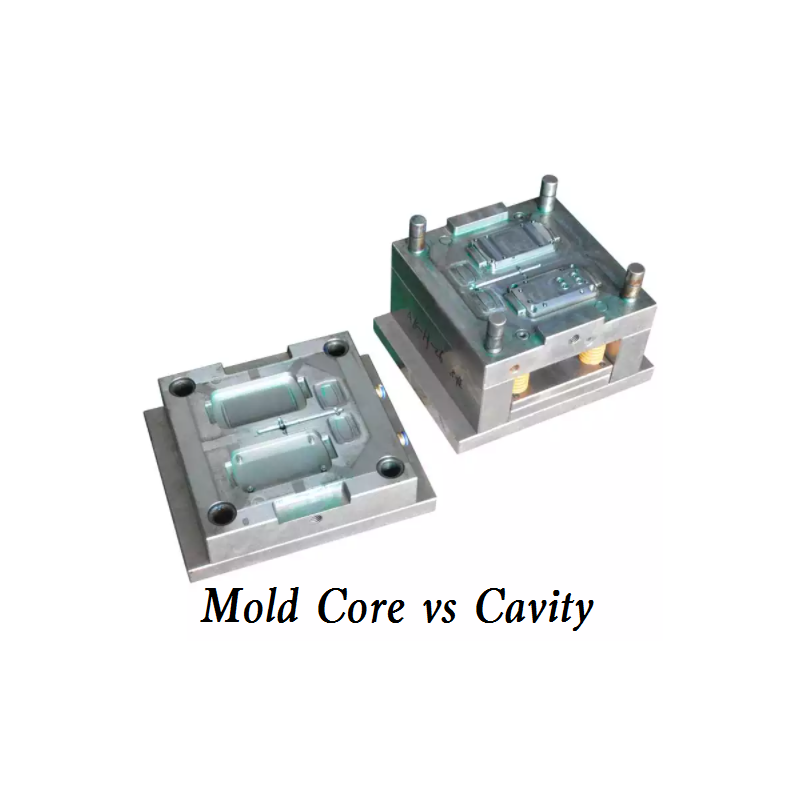
What is the Core in Injection Molding?
The core works in tandem with the cavity to form the final shape of the part, but it has a distinct function. While the cavity defines the outer surface, the core shapes the internal features of the product, such as holes, cavities, threads, or undercuts. Think of the core as the “heart” of the mold—it’s responsible for the intricate internal details that cannot be achieved by the cavity alone.
Core design requires a high degree of precision, especially when producing parts with complex geometries. The core is often the more technically challenging component to design, as it must work seamlessly with the cavity to create the desired shape while ensuring that the part can be ejected easily once molded. At LSRmold, we leverage state-of-the-art technologies such as 3D printing and advanced CAD systems to create cores that can handle even the most intricate shapes. Whether it’s a part with fine internal details or complex undercuts, our expertise in core design allows us to deliver exceptional results.
Incorporating the core into the mold also requires careful consideration of factors such as wear resistance, part ejection, and mold longevity. If the core is not designed correctly, it can lead to issues like excessive wear, difficulty in part ejection, or even mold failure. Our team works closely with our clients to ensure that every core is designed with these factors in mind, resulting in molds that produce consistent, high-quality parts.
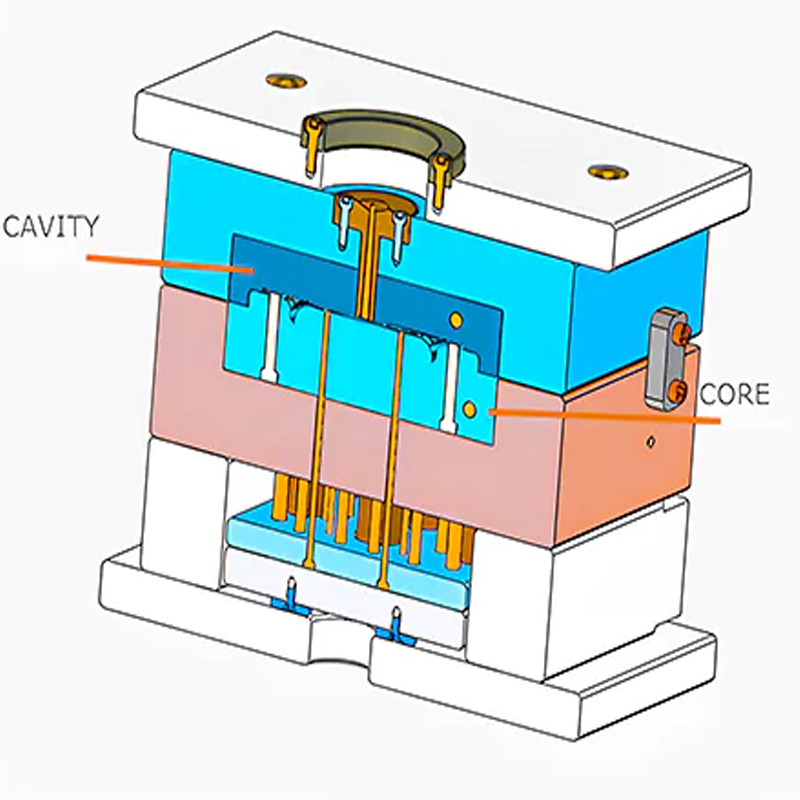
Key Differences Between the Cavity and Core
Though the cavity and core serve related functions in the molding process, they are designed for distinct purposes. The cavity shapes the external surface of the part, while the core defines the internal features. Here’s a breakdown of their primary differences:
– Cavity: Shapes the outer dimensions of the product. It is the “shell” that forms the exterior.
– Core: Forms the internal features of the part, such as cavities, holes, threads, and undercuts.
– Design Complexity: While cavity design is often more straightforward, core design can be more complex due to the need for intricate internal features.
– Cooling and Venting: Both components require effective cooling and venting systems to prevent defects. However, the cavity typically requires uniform cooling for external features, while the core may require more specialized cooling to regulate internal features.
Both components must work in harmony to create a final product that meets both functional and aesthetic requirements. Poorly designed cavities or cores can lead to various issues, including warping, sink marks, or problems with part ejection. Therefore, ensuring that both components are properly aligned and carefully designed is critical for achieving consistent results in the molding process.
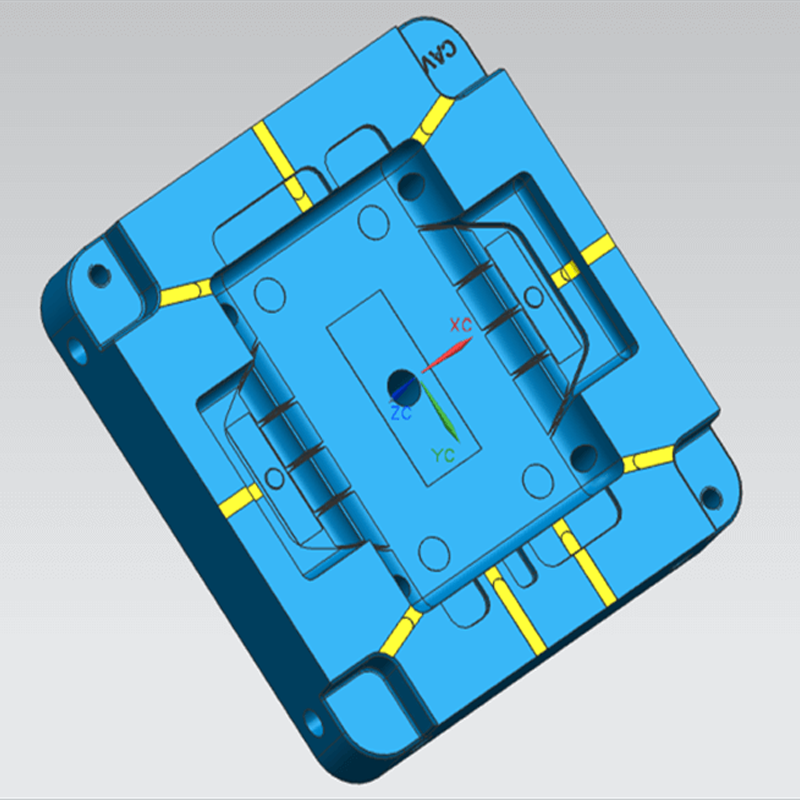
Best Practices for Designing Cavity and Core
Creating a high-quality mold involves more than just choosing the right materials; it requires a thoughtful and strategic design process. Here are some best practices that can help ensure success in cavity and core design:
- Collaboration Between Designers and Molders
Effective communication between mold designers and injection molders is essential to ensure the cavity and core designs align with the specific requirements of the product. By working together, designers and molders can optimize these components for efficiency, quality, and cost-effectiveness.
- Utilizing Advanced Technology
Advanced technologies such as 3D printing, CAD software, and mold flow analysis tools significantly improve the design process. These tools allow designers to visualize and simulate the material flow within the mold, ensuring that both the cavity and core are optimized for optimal performance.
- Material Properties Matter
Different materials behave differently during the molding process. Understanding the material properties is essential for designing the cavity and core effectively. For example, materials with high shrinkage rates may require specialized cooling strategies to avoid defects such as warping.

- Efficient Cooling and Venting Systems
Proper cooling and venting are crucial for achieving high-quality products. Both the cavity and core should be designed with optimized cooling channels to ensure uniform cooling and avoid defects. Venting systems are necessary to allow gases and air to escape, ensuring that the material fills the mold properly.
- Part Ejection Considerations
Both cavity and core designs must facilitate smooth part ejection. Features like undercuts or deep internal cavities may require additional mechanisms such as ejector pins or side actions to ensure the part can be easily removed from the mold.
By adhering to these best practices, manufacturers can avoid common pitfalls in mold design and ensure that both the cavity and core are optimized for efficient, high-quality production. At LSRmold, we leverage our expertise in mold design and the latest technologies to deliver superior products that meet the highest industry standards.
Conclusion:
Understanding the roles and intricacies of the cavity and core is essential for ensuring the success of your injection molding projects. At LSRmold, we prioritize precision and efficiency in every aspect of mold design, ensuring that both the cavity and core work together seamlessly to create high-quality, functional products. Whether you are manufacturing simple parts or complex geometries, our team of experts is equipped to meet your needs with the latest technologies and industry-leading techniques.
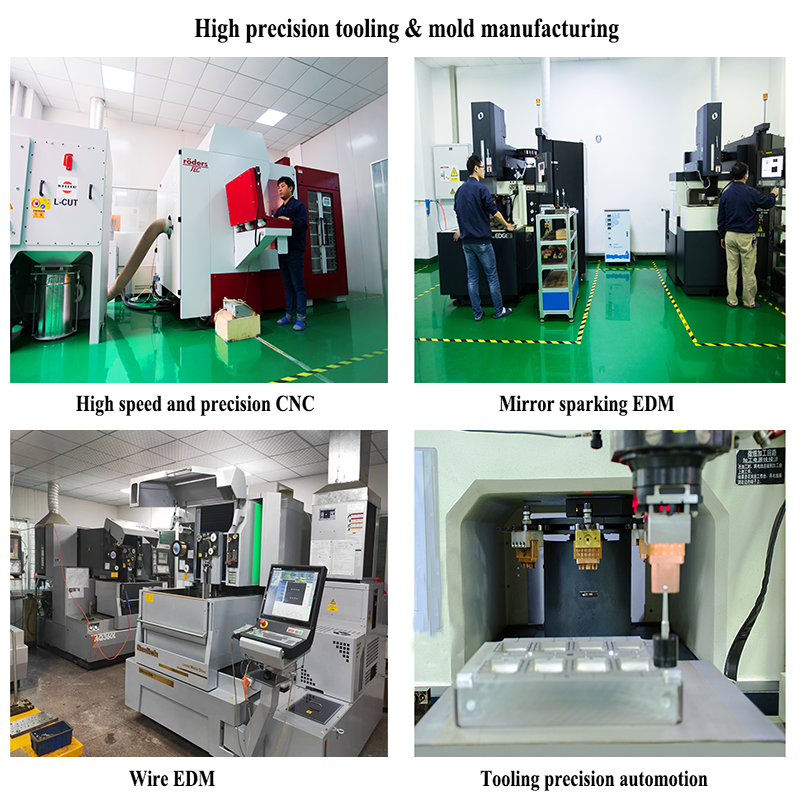
We hope this detailed look into cavity and core design has provided valuable insights into the injection molding process. If you have any questions or need professional guidance for your injection mold designs, don’t hesitate to reach out to LSRmold. Our team is always ready to assist you with any challenges you may face in your manufacturing process, ensuring your projects are completed on time, within budget, and to the highest quality standards.
Contact us today to learn more about how our advanced molding capabilities can help bring your designs to life. Let’s work together to create innovative, high-performance components for your next project!

